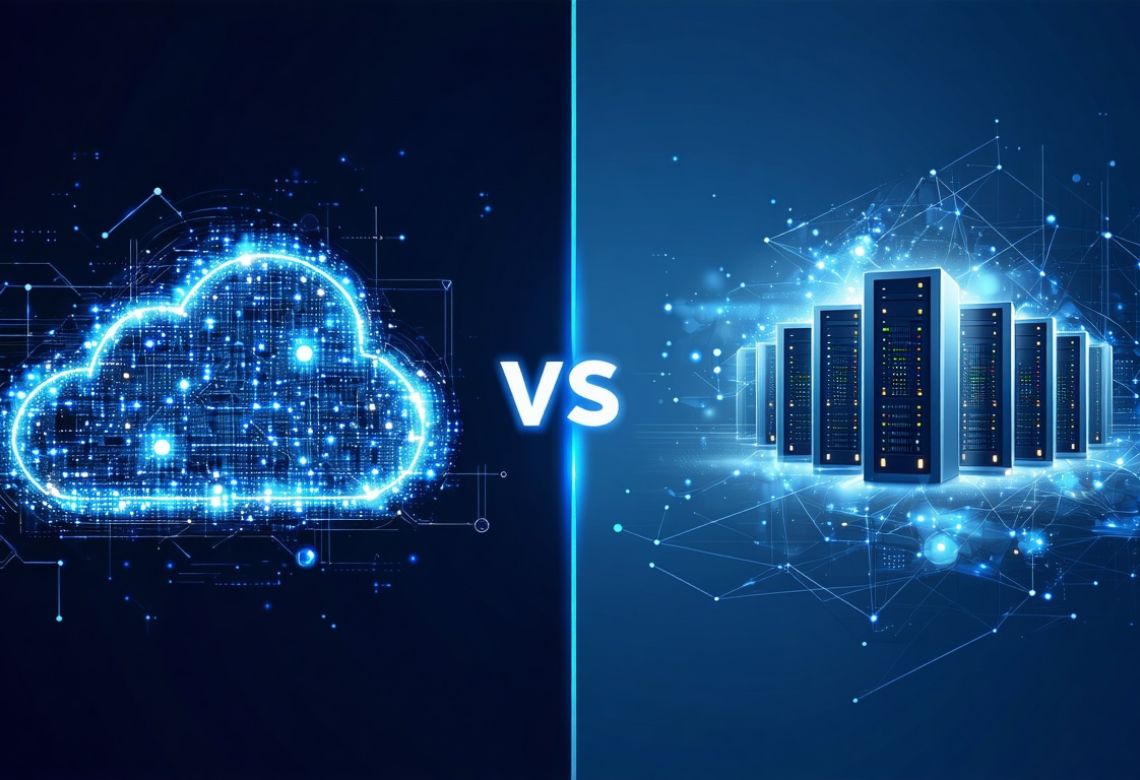Organizations weighing private cloud vs on premise environments must balance control, cost, and compliance requirements. As businesses pursue digital transformation, the choice between hosting workloads on dedicated internal infrastructure or maintaining on-premise data centers can determine operational agility and long-term strategy. The private cloud services market is projected to grow at a CAGR of 26.71% between 2023 and 2028, representing an increase of USD 619.08 billion (IBM). At the same time, 71% of business executives agree it’s challenging to realize the full potential of digital initiatives without a solid hybrid approach (IBM). That’s why understanding the distinctions between private cloud and on-premise deployments is critical for IT decision-makers.
Defining Private Cloud
A private cloud delivers virtualized resources exclusively to a single organization. This solution offers the elasticity and self-service capabilities of cloud computing while retaining the security and customization of dedicated infrastructure. Key characteristics include:
- Dedicated hardware and network configurations
- Centralized management software and automation
- Access control policies tailored to regulatory needs
- Options for on-premise or hosted deployment
In this scenario, organizations may consider managed services to offload routine maintenance. Outsourcing some or all private cloud operations to third-party providers—ranging from hyperscale platforms to specialized managed private cloud hosting services—can reduce staffing overhead. For deeper insight into configuration and design, see building a private cloud and explore the advantages of private cloud.
Defining On-Premise Infrastructure
On-premise infrastructure refers to physical servers, storage, and networking hardware located within an organization’s facilities. IT teams handle every aspect of deployment, from procurement to configuration and support. Compared to private clouds, traditional on-premise environments feature:
- Complete in-house ownership and direct oversight
- Manual provisioning workflows
- Capital expenditure tied to hardware refresh cycles
- Limited elasticity without additional hardware investment
For enterprises with stringent compliance mandates or legacy application portfolios, on-premise deployments continue to provide predictable performance and straightforward audit trails.
Comparing Key Considerations
The following table summarizes how private cloud and on-premise solutions measure up across core criteria:
| Feature | Private Cloud | On-Premise Infrastructure |
|---|---|---|
| Deployment Complexity | Medium – automated provisioning | High – manual setup and configuration |
| Security Controls | Customizable policies, centralized enforcement | Full control, direct hardware access |
| Initial Capital Outlay | High – hardware/software licensing | High – servers, storage, networking |
| Operational Expenses | Moderate – managed options available | High – dedicated in-house staff |
| Scalability | Elastic via virtualization | Fixed capacity, hardware procurement required |
| Compliance Posture | Meets strict standards with audit tooling | Direct oversight simplifies audit processes |
| Management Overhead | Moderate – can outsource maintenance | High – full lifecycle responsibility |
Deployment Complexity
Private cloud environments leverage orchestration and virtualization tools to automate server provisioning and scaling. Organizations may integrate self-service portals, speeding application rollouts. In contrast, on-premise deployments often rely on manual provisioning, custom scripts, and physical cabling. That extra complexity can extend project timelines and require dedicated infrastructure teams.
Security And Compliance
This solution offers encryption, role-based access, and network isolation features that align with industry standards. Private cloud configurations can incorporate continuous monitoring and compliance-as-code frameworks. In other cases, on-premise infrastructure grants full physical access control, making it easier to meet certain audit and regulatory requirements without third-party dependencies.
Cost Structure
Private cloud requires significant upfront investment in hardware, virtualization licenses, and management platforms. However, organizations may offset these costs by outsourcing routine operations to private cloud companies. On-premise environments incur comparable capital expenses, plus ongoing outlays for power, cooling, and on-site technical support. Over time, managed private cloud solutions can deliver predictable operational expenses through subscription or consumption-based pricing.
Scalability And Agility
Virtualization and resource pooling enable near-instant scaling in a private cloud. Workloads can shift between on-premise hardware and public cloud resources in a hybrid model (see hybrid cloud vs on premise). Conversely, scaling an on-premise environment often demands hardware procurement cycles, potentially leading to capacity shortfalls during demand spikes.
Performance And Control
Dedicated hardware in on-premise setups delivers consistent low-latency performance for demanding workloads. Private cloud can match this with optimized resource allocation, high availability clusters, and redundancy planning. Yet this setup may introduce additional layers of abstraction, which organizations need to monitor to maintain performance SLAs.
Industry Use Cases
Different sectors favor one approach over another based on compliance, workload profile, and strategic goals.
Regulated Industries
Financial services and healthcare organizations often prioritize on-premise deployments or fully isolated private clouds to ensure data residency and audit transparency.Data-Intensive Applications
Enterprises running high-performance computing or big data analytics may leverage private clouds that support cloud-native principles, enabling seamless workload migration to public clouds when needed.Emerging Hybrid Strategies
Many businesses combine on-premise, private cloud, and public cloud infrastructures to optimize costs and resiliency. A recent Gartner survey found 81% of respondents work with multiple public cloud providers and management models (IBM).
In each scenario, IT leaders evaluate the right mix of control, flexibility, and total cost of ownership.
Making The Decision
Organizations may follow a structured framework to determine the optimal deployment model:
- Assess Requirements
Define security, compliance, and performance needs for target workloads. - Evaluate Internal Capabilities
Inventory in-house expertise and infrastructure assets. - Consider External Expertise
Compare offerings from managed private cloud hosting services and leading private cloud companies. - Pilot And Benchmark
Deploy a proof of concept to validate operational processes and performance. - Plan Migration
Develop a phased approach, leveraging best practices from private cloud migration resources. - Review And Optimize
Monitor key metrics, refine resource allocation, and adjust governance as business goals evolve.
This methodical path helps align technology investments with strategic objectives and risk tolerance.
Conclusion
When deciding between private cloud and on-premise infrastructure, organizations must balance deployment complexity, security posture, cost structure, scalability, and performance requirements. Each approach offers distinct advantages: private clouds bring elasticity and managed operations, while on-premise environments deliver direct control and predictable performance. By mapping technical needs against business priorities, IT leaders can select a solution that fosters agility without compromising compliance or budget.
Need help with choosing between private cloud and on-premise infrastructure? We help by identifying requirements, evaluating providers, and designing migration strategies. Connect with our team to find the solution that aligns with organizational goals and drives sustainable growth.






